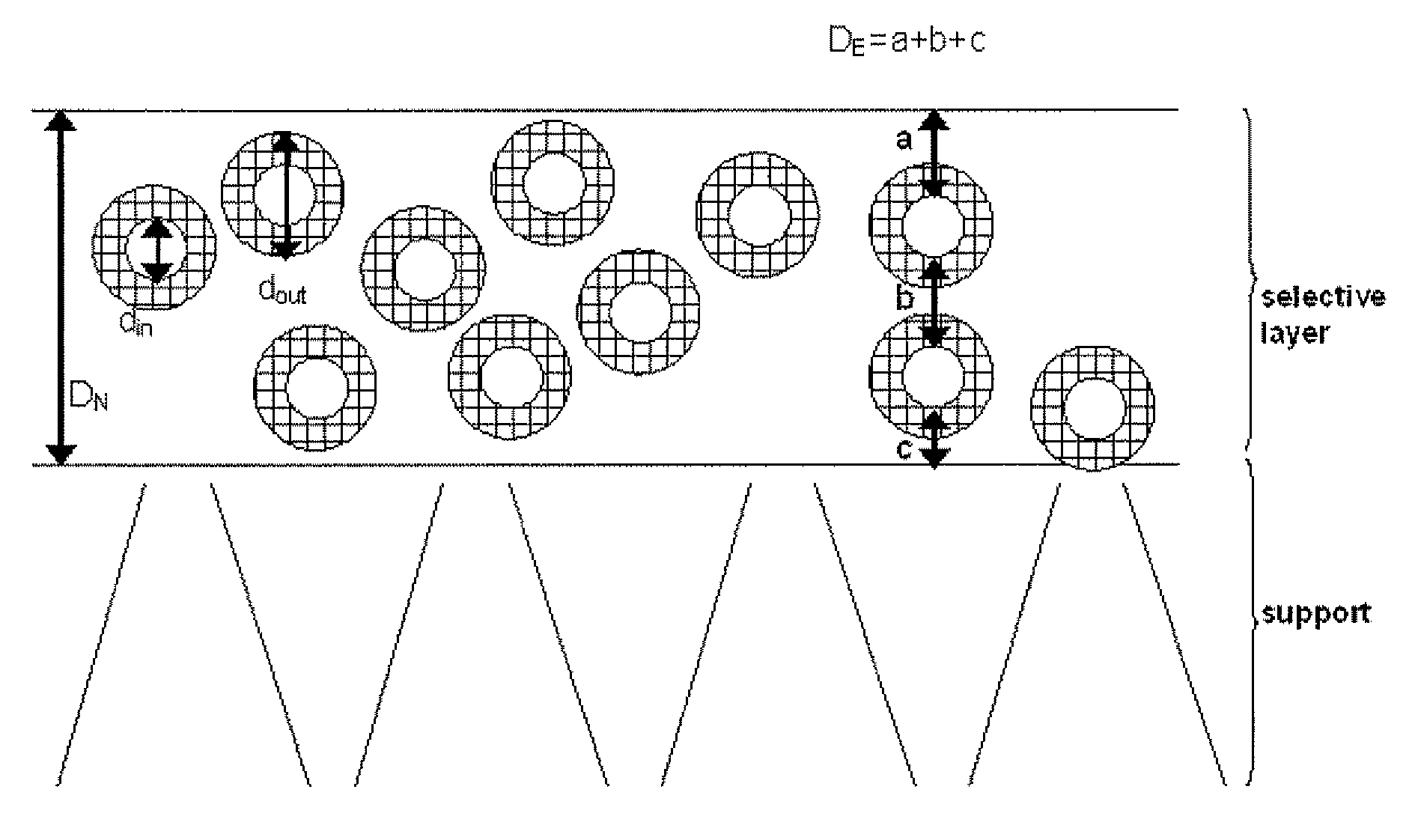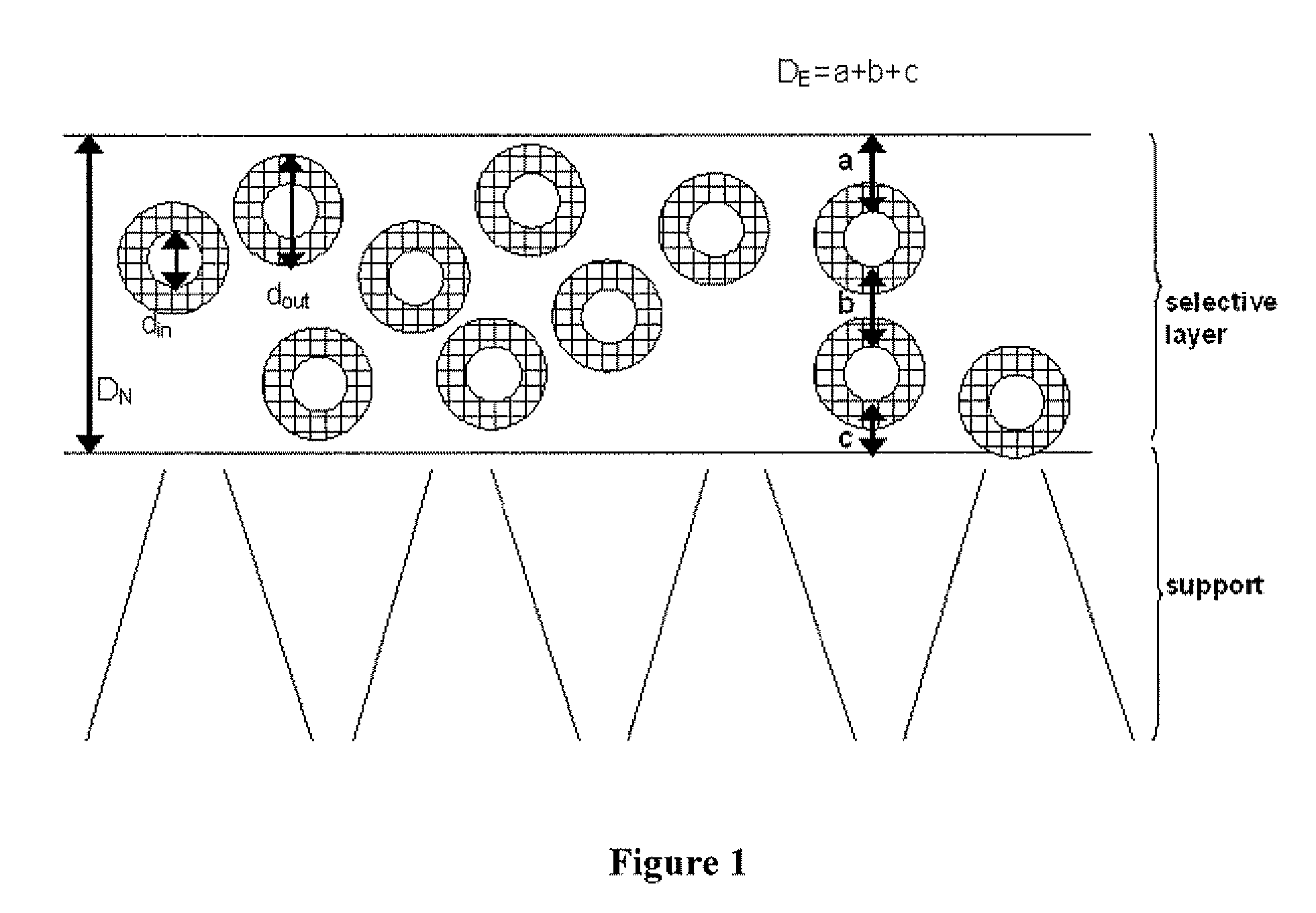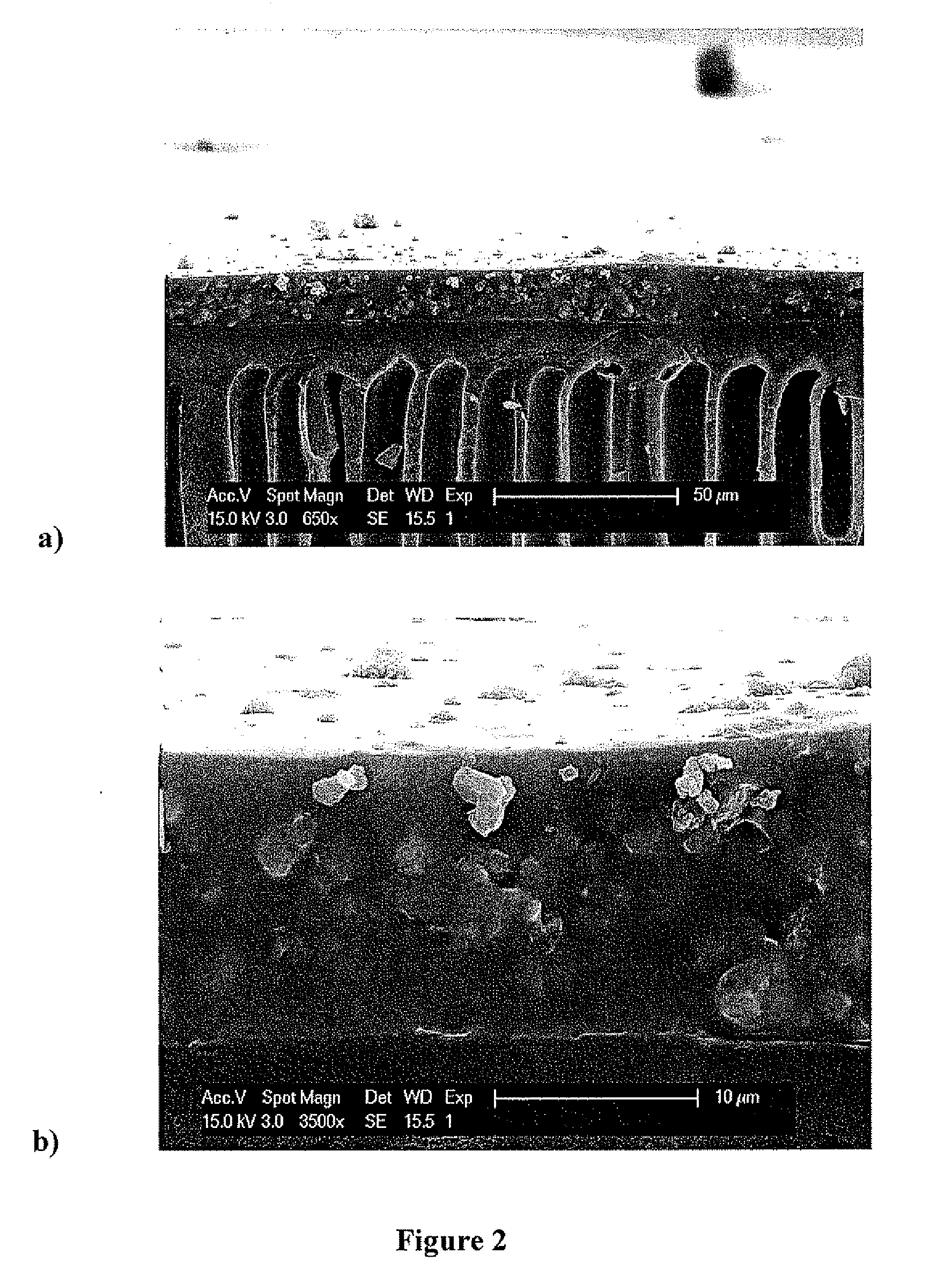Membranes filled with porous hollow particles
a hollow particle and membrane technology, applied in the field of new polymer materials, can solve the problems of low permeability, difficulty in dispersing colloidal particles in the polymer matrix, and limiting the minimal thickness of a defect-free composite membrane to a few micrometers, so as to reduce the swelling of the membrane, improve the membrane characteristics, selective and/or faster the effect of certain molecules
- Summary
- Abstract
- Description
- Claims
- Application Information
AI Technical Summary
Benefits of technology
Problems solved by technology
Method used
Image
Examples
example 1
[0035]Hollow spheres of 1-5 μm in size with a silicalite-1 shell were laboratory prepared from a so-called ‘clear solution’ (ratio TEOS:TPAOH:H2O was 25:9:400) and an ethanolic solution of CTAB (5 wt %). An equal volume of CTAB 5% in ethanol was added dropwise to an amount of clear solution whilst vigorously stirring. The solution was poured in a screw-capped bottle, closed off very well and put in an oven at 90° C. for 4 days. The resulting precipitated white sol was washed thoroughly with ethanol and filtrated by buchner filtration. It was then dried at 60° C. and calcined at 500° C. (rate 1° / min) for 5 hours. Before using in filled PDMS preparation, the powder was dried at 110° C.
example 2
[0036]Unfilled PDMS (7 wt % and 15 wt %) was prepared as a reference in hexane with RTV 615A and RTV 615B components present in a 10:1 ratio, as proposed by the manufacturer to be the ratio for optimal curing. The mixture was prepolymerised for 1 h at 60° C. and poured in a petri-dish. The solvent was allowed to evaporate for several hours and the resulting film was cured at 110° C. Pieces of the resulting membrane were weighed and submerged in the solvent until swelling equilibrium was reached.
Swelling (ml / g)Wt % PDMSTolueneDCM71.260.97151.231.06
example 3
[0037]PDMS (20 wt % in hexane) filled with micronsized zeolite crystals (ZSM-5 (CBV3002) and USY (CBV780) both 30 wt % in PDMS) was prepared as a reference in hexane with RTV 615A and RTV 615B components present in a 10:1 ratio. The zeolite powder was dispersed in hexane. To improve the dispersion, a treatment of one hour in an ultrasonic bath was applied to break crystal aggregates. The cross-linker (RTV 615B) was added to the zeolite dispersion and this mixture was stirred at 40° C. for two hours to allow sufficient time to establish strong interactions between both phases. Finally, the prepolymer (RTV 615A) was added and the mixture was stirred for another hour at 60° C. The (PDMS−filler) solution was poured in a petridish and treated the same way as described in EXAMPLE 2.
Swelling (ml / g)FillerTolueneDCMUSY0.470.56ZSM-50.630.66
PUM
 Login to View More
Login to View More Abstract
Description
Claims
Application Information
 Login to View More
Login to View More - R&D
- Intellectual Property
- Life Sciences
- Materials
- Tech Scout
- Unparalleled Data Quality
- Higher Quality Content
- 60% Fewer Hallucinations
Browse by: Latest US Patents, China's latest patents, Technical Efficacy Thesaurus, Application Domain, Technology Topic, Popular Technical Reports.
© 2025 PatSnap. All rights reserved.Legal|Privacy policy|Modern Slavery Act Transparency Statement|Sitemap|About US| Contact US: help@patsnap.com



